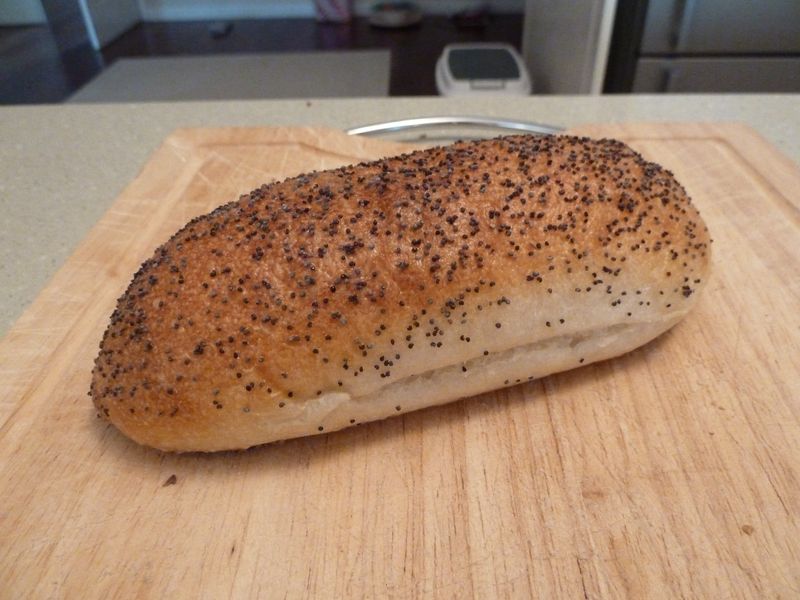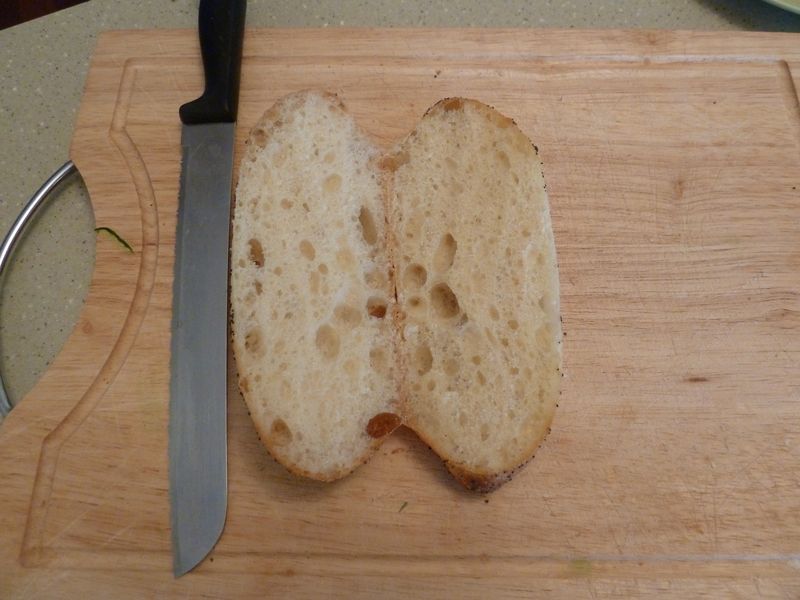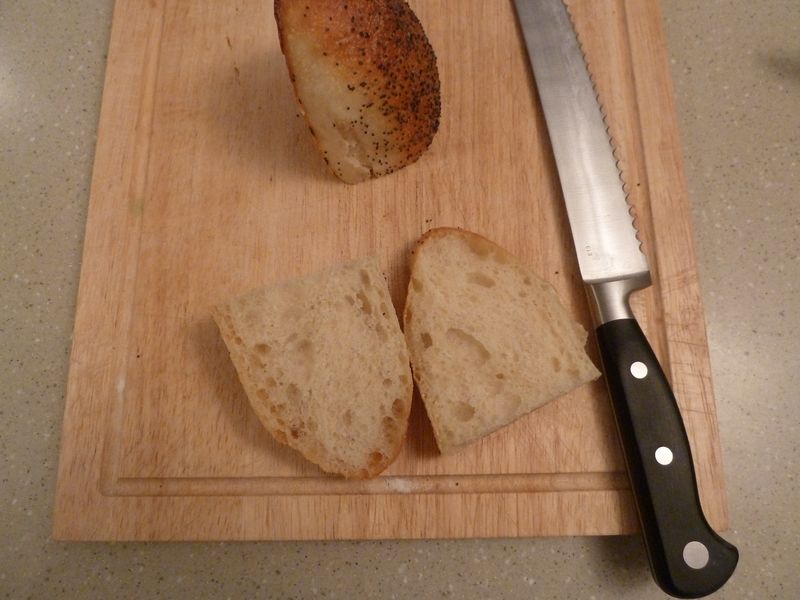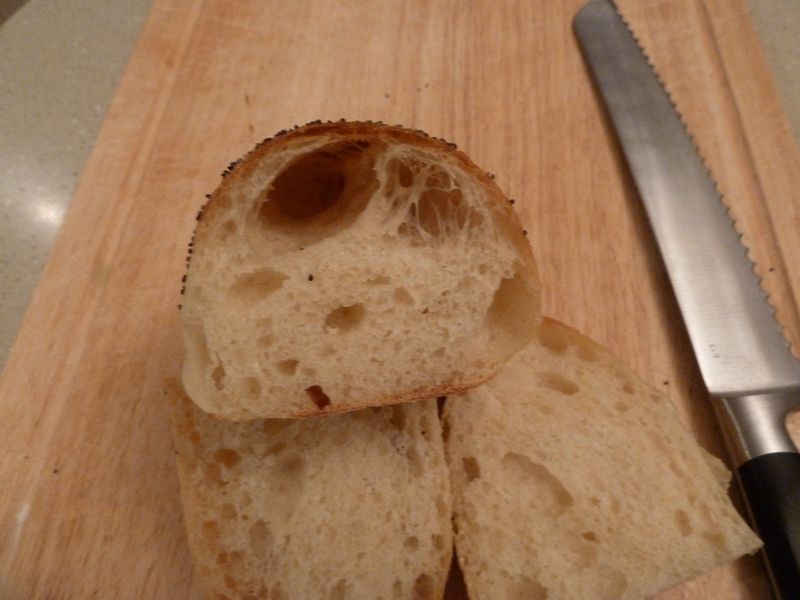Hi,
I posted a couple of days ago about avoiding large holes under the top crust of my rolls: http://www.thefreshloaf.com/node/39392/large-gaps-under-top-crust
I had another couple of attempts at the recipe, bearing in mind the advice I received about shaping and proofing, but the problem hasn't been entirely eliminated. I made sure to pat out the gas fairly thoroughly during shaping, and proofed for a shorter duration.
The first batch looked nice:

And had a nice crumb structure considering that this is an enriched bread:

The other rolls were eaten before I could take any pictures, but they seemed similar in appearance and crumb. I didn't cut any vertical cross-sections, but I felt encouraged. I didn't notice any big gaps while eating, but everything gets kind of squished together so it's hard to tell.
No changes in procedure were made for the second batch. The horizontal cut looked similar:

But the vertical cut revealed that the problem persists:

I sliced another roll to double check, same story:
These rolls are very tasty, but clearly there is something I need to tweak.
Thoughts for next time:
- Make some of the dough pieces into round rolls, and others into ovals, to see if the problem is related to the shape
- Reduce the proof time further, perhaps baking in two stages to compare
They didn't seem overproofed to me - when I poked them gently with my finger, the indentation bounced back fairly quickly but they felt light and airy. I only made very shallow indents though. I also think I degassed adequately during shaping.
Any thoughts welcome.
-Simon
To me the problem seems to be too little degassing after the bulk fermentation. If you want the crumb to be tighter, you should degas a little bit more. You can see, not only the flying crust, but large irregular holes in the crumb, which indicates little degassing.
I don't mind having the irregular holes, it's just I'd prefer to avoid having these oversized holes under the top crust.
It's not that I want the crumb to be tighter - it's that I want it to be consistent. Since I degas the dough pieces evenly, I'm not sure why there is such a stark difference between the lower and upper halves of the loaf.
Thanks for your advice, though. It's worth a try.
I'm using instant (dry) yeast. There's milk, sugar and olive oil in the dough. The recipe is the Italian rolls from Reinhart's BBA.
The hydration is about 66%, or 68% if you include the olive oil.
it doesn't hydrate flour. So it is 66%.
What about two bulk rises? And when watching the rise, perhaps it is going too long. Pinch off a little ball of dough before the bulk rise and jam it into the bottom of a straight narrow glass. Like an empty salt shaker. Mark the flattened level and then make a mark when it is double. Knock the gas completely out of both the sample and the dough when it almost reaches double and let it rise again. Then degas and shape. See if that helps.
Wasn't sure about the oil, thanks for the correction. And thanks for your suggestion, I might give that a go.
Thanks, I will try this.
Just a thought but maybe check your dough temptures that may change your proof times.
Thanks, I will try to keep a closer eye on the temps next time.